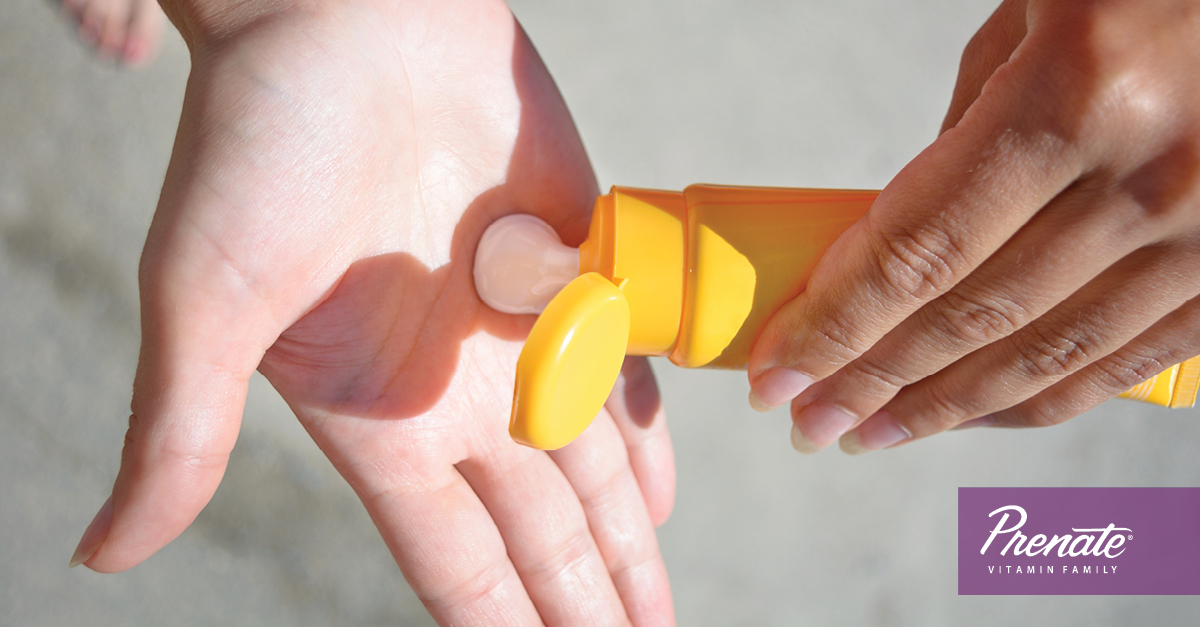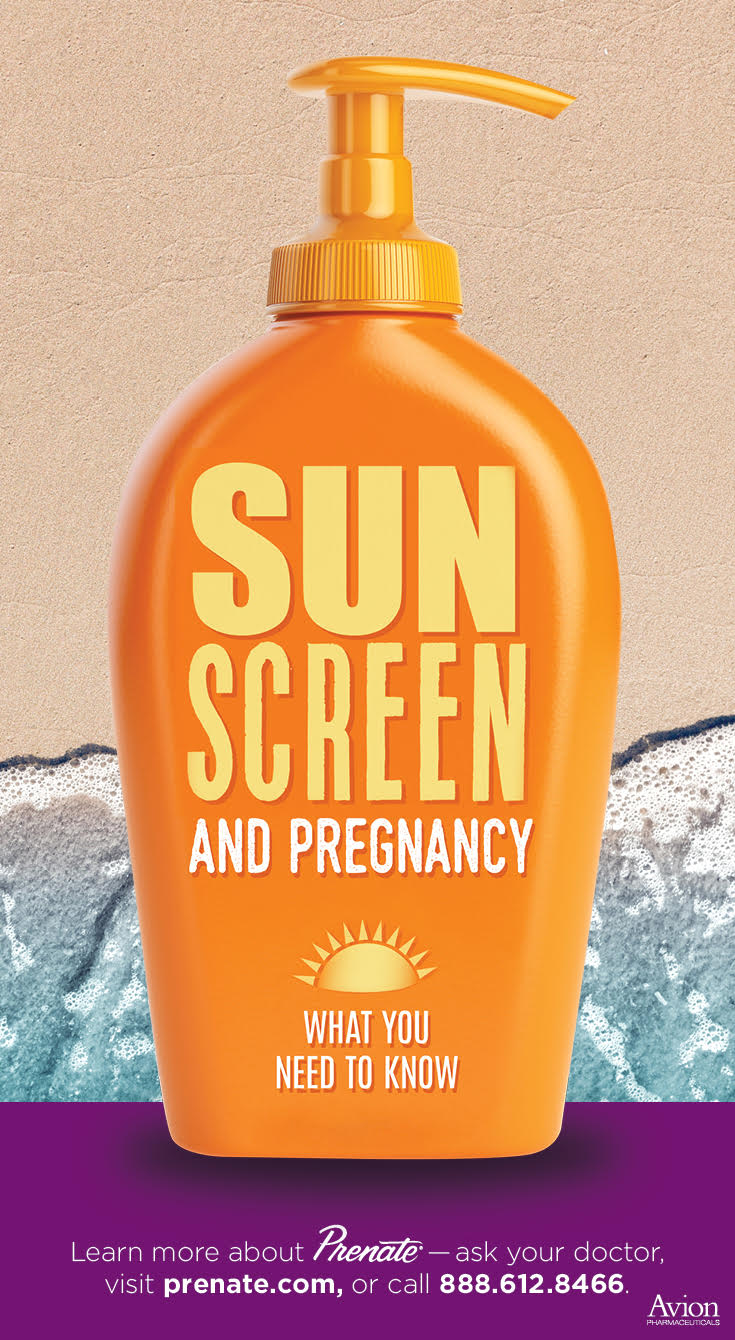Sunscreen and Pregnancy
July 2, 2019
Without a doubt, using sunscreen is a great way to reduce the risk of harmful sun damage. During pregnancy, sunburn can bring increased risk to mothers and their growing babies.1 But did you know that all sunscreens aren’t created equal? Expecting mothers should be mindful not to use just any bottle lying around. In this post, we’ll talk about some of the harmful effects of sun exposure during pregnancy and offer tips on choosing the best sunscreen for expecting moms.
Avoiding Sunburn During Pregnancy
While minor sunburns are usually nothing to worry about, severe burns from prolonged sun exposure can cause serious side effects that may affect unborn babies. Sunburn can elevate your risk of heat-related health problems such as heatstroke, which can lead to birth defects in some instances. The risk may be especially higher if heatstroke occurs before the embryo implants.1
Sunburn may also lead to dehydration, promoting the risk of preterm labor or miscarriage due to premature uterine contractions. Dehydration can be especially risky for pregnant women, as they can lose up to a half-gallon of fluid after only 10 minutes in temperatures of 90 degrees Fahrenheit or higher.1
Using Sunscreen
Sunscreen can be very effective in combatting the dangerous effects of sun exposure. However, it is important to use the right kind of sunscreen for your needs and to use it appropriately for the best protection and to avoid unwanted health risks.
Using sunscreen during pregnancy is relatively safe; however, some research suggests that chemicals in some types of sunscreen may be harmful to pregnant women and unborn children. Because sunscreens have very limited dermal or systemic absorption (meaning they are not absorbed well by the body), they are commonly used to protect our skin from harmful sun rays. Likewise, sunscreens have been used in pregnancy to prevent melasma, a common skin condition that’s sometimes caused by hormonal changes. Melasma causes brownish or grayish patches to appear on the skin.2-3
Harmful Chemicals in Sunscreen
Some sunscreen products contain chemicals that may cause harm, especially for expecting mothers. One such chemical is oxybenzone, and it has been linked to allergies, hormone disruption and cell damage. Oxybenzone has also been linked to low birth weight in baby girls whose mothers are exposed to the chemical during pregnancy. Furthermore, oxybenzone is a penetration enhancer, which means it helps other chemicals penetrate the skin.4
A 2008 study from the U.S. Centers for Disease Control and Prevention (CDC) found that while oxybenzone is most common in sunscreen products, there are literally hundreds of other personal care products that contain the chemical. Because of the known risks associated with oxybenzone and its widespread use, the nonprofit human health organization Environmental Working Group (EWG) has called on the U.S. Food and Drug Administration (FDA) to review its safety.5 As of this writing, the FDA’s website still lists oxybenzone as an “acceptable active ingredient” in sunscreen products.5
Consumers, and especially expecting mothers, are encouraged to speak with their health care professionals and do their own research before choosing products that could affect their health. While the FDA continues to accept oxybenzone, there are alternatives on the market that consumers may wish to explore.
There also are other chemicals commonly found in sunscreen products that researchers are keeping their eyes on. One study explored the possible neurotoxicity risks associated with other chemicals in sunscreen, such as octyl methoxycinnamate (OMC), benzophenone-3 (BP-3) and octocrylene. Although this study did not produce conclusive evidence linking sunscreen to specific health problems, it raised concerns about the association between exposure to substances commonly found in sunscreens and endocrine and developmental impairment.6
Sunscreens Without Harsh Chemicals
Mineral sunscreens, which use zinc oxide and titanium dioxide, are considered better than chemical sunscreens by the EWG. However, the EWG’s website cautions that mineral sunscreens should use forms of minerals that are coated with inert (inactive) chemicals to minimize photoactivity, a physical or chemical response to sunlight.7 In other words, even mineral sunscreens have the potential to cause damage, depending on how they are manufactured.
If you’re looking for a list of organic or mineral-based sunscreen products, Good Housekeeping recently published a list of them, featuring a range of brands, SPF levels and price-points.8 While this list may be a good place to start, consumers should be cautious about choosing products based solely on non-medical lifestyle articles. Speak with your doctor or dermatologist for more information and guidance on choosing a sunscreen for your needs.
Remember avoiding direct sunlight at the most dangerous times of the day, from 11 am to 3 pm will help limit exposure to the UV rays when they are at their peak. You can also wear light loose-fitting clothing that have sun protection as an alternative.
You Are About To Leave This Website
By clicking continue, this link will take you to a website to which Alora Pharmaceuticals Policies & Terms of Use do not apply. Alora and its subsidiaries do not control the content or accuracy of third-party websites and assume no responsibility for their use.











